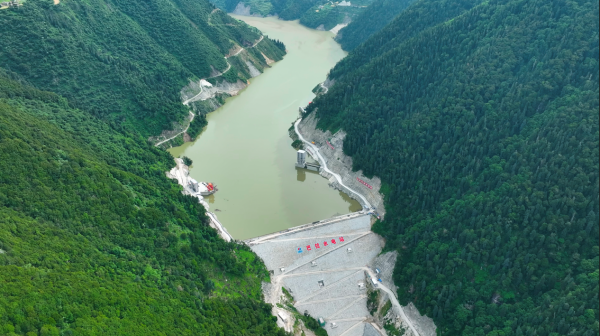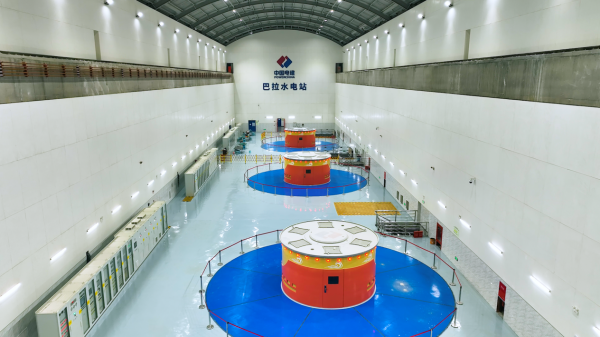On August 8, the last generating unit of the Bala Hydropower Station on the upper reaches of the Dadu River completed a 72-hour trial run and officially connected to the grid, marking the full commissioning of this key project.

The last generating unit of the Bala Hydropower Station on the upper reaches of the Dadu River successfully completed a 72-hour trial run and was officially connected to the grid on August 8. [Photo/sasac.gov.cn]
As a flagship project of Power Construction Corporation of China, the station pioneered the world’s first artificial breeding and large-scale cultivation technology for the Sichuan taimen, a nationally protected species. It also developed a 26-megawatt ecological generating unit to precisely guarantee minimum ecological flows downstream and meet special water requirements during fish spawning periods. The supporting fish breeding station achieves harmonious coexistence between hydropower development and biodiversity conservation.
It took just over 40 days from the commissioning of its first unit to the full operation of all four units, setting a new record for large-scale hydropower projects in cold and high-altitude regions. During its five-year construction period, the team overcame several challenges and independently developed a hydraulic needle-beam bottom-arch sliding formwork trolley to break through a long-standing technical bottleneck, and retrieved a complete 127 mm diameter, 21.5-meter-long concrete core sample from the upstream cofferdam — setting a domestic record for coring with a 150 mm borehole.
The station has a total installed capacity of 746 MW, consisting of three 240 MW conventional units and one 26 MW ecological unit, with a designed annual output of 2.553 billion kWh — enough to meet the basic electricity needs of about one million households.

The station consists of three 240 MW conventional units and one 26 MW ecological unit. [Photo/sasac.gov.cn]
During construction, the project team built rural access roads, connected two townships previously without electricity, and trained over 500 skilled workers annually, boosting local employment and socioeconomic development. Once operational, the station is expected to save 1.16 million tons of standard coal and cut 3 million tons of carbon dioxide emissions each year — equivalent to adding 85,000 mu of forest.
The project has secured 12 patents and four QC achievements, providing a mature technical model for medium- and large-scale hydropower projects under complex plateau conditions. Its full operation will greatly advance the efficient operation of the upper Dadu River clean energy base.
(Executive editor: Yuan Ting)